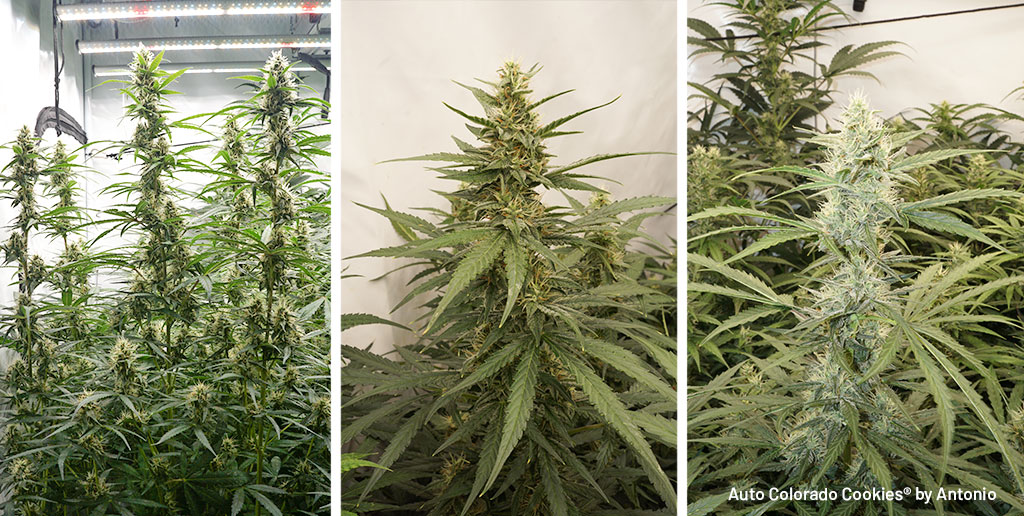To stop stretch in flowering, ensure the plants are receiving the appropriate amount of light and maintain a consistent temperature and humidity level. Additionally, adjust the distance between the light source and the plants and use low-stress training techniques to promote more compact growth.
Growing flowering plants can be a rewarding experience, but sometimes, you may encounter issues like stretch. Stretch refers to the vertical elongation of the stems during the flowering stage, resulting in tall and spindly plants. This can be problematic, as stretched plants may produce less yield and have weaker stems.
However, by implementing a few simple techniques, you can effectively prevent stretch and promote healthier, more robust growth in your flowering plants. We will explore the best practices for stopping stretch in flowering and maintaining compact, vigorous plants throughout the flowering phase. By following these tips, you can ensure optimal growth and maximize the potential of your plants.

Credit: www.growweedeasy.com
Understanding The Stretching Phenomenon
Stretching in flowering plants is a common phenomenon that occurs during the growth and development stages. It refers to the vertical elongation of the stem, causing the plant to become taller and spindly. Understanding the science behind this phenomenon is crucial for gardeners and horticulturists to effectively manage and prevent excessive stretching.
The stretching phenomenon is primarily influenced by various factors, such as light intensity, duration of light exposure, and the spectrum of light. Adequate light is essential for photosynthesis, but insufficient light can trigger stretching as plants attempt to reach towards available light sources. Moreover, certain hormones, like gibberellins, play a significant role in stem elongation.
| Factors Influencing Stretching in Flowering Plants |
|---|
| Light intensity |
| Duration of light exposure |
| Light spectrum |
| Hormonal influences |
To prevent excessive stretching, it is essential to provide plants with adequate and balanced light. Using grow lights with appropriate intensity and spectrum can help control stretching. Additionally, maintaining the optimal distance between the light and plants can also regulate elongation. Pruning and training techniques, such as topping and pinching, can help promote bushier growth and discourage stretching in flowering plants.
In summary, understanding the science and factors influencing stretching in flowering plants is essential for effective garden management. By implementing proper light, hormone regulation, and training techniques, gardeners can prevent excessive stretching and encourage healthier plant growth.
How to Stop Stretch in Flowering: Step by Step Guide
Techniques To Counter Stretching In Flowering
Implementing proper lighting techniques is crucial in preventing stretch during the flowering stage. Providing the correct amount and type of light will help control plant growth. Using high-intensity discharge lamps such as HPS or LED lights can minimize stretch and promote compact growth.
Adjusting temperature and humidity levels also plays a significant role in stopping stretching. Maintaining an optimal temperature between 68-77°F (20-25°C) and humidity levels around 50-60% can prevent excessive growth and keep plants compact.
Optimizing nutrient intake is essential for controlling stretch. Ensuring a balanced nutrient solution with a proper ratio of nitrogen (N), phosphorus (P), and potassium (K) can help regulate growth and prevent elongation.
Adequate watering techniques are crucial to prevent stretch as well. Providing the right amount of water ensures proper hydration while avoiding overwatering, which can contribute to excessive growth.
Training and pruning methods can also be employed to reduce stretch and encourage bushier growth. Techniques such as topping, FIMing, and low-stress training (LST) can help redirect growth hormones and promote lateral branching.
Natural Remedies To Stop Stretch In Flowering
Discover effective natural remedies to prevent stretch in flowering plants. Learn techniques to control growth and optimize budding for healthier, more vibrant flowers.
Introducing Companion Plants
Companion plants play a crucial role in preventing and stopping stretch during the flowering stage. By strategically planting certain plants alongside your flowering plants, you can create a balanced ecosystem that helps regulate growth. Marigolds and chamomile are excellent choices as they release natural compounds that discourage stretch. Their strong aroma can also deter pests that may hinder healthy growth.
Utilizing Organic Supplements
Organic supplements are another effective solution for tackling stretch in flowering plants. These natural additives provide essential nutrients that promote strong, compact growth. Seaweed extract, fish emulsion, and composted manure are popular choices among gardeners. Mixing these supplements into the soil or applying them as a foliar spray can help regulate stretching and contribute to overall plant health.
Employing Inducing Techniques
Various inducing techniques can help prevent or reduce stretch during the flowering phase. Low-stress training (LST), for instance, involves gently bending and securing branches to encourage lateral growth. This technique promotes shorter internodal spacing and results in more compact plants. Pruning can also be utilized to remove excessive growth and redirect energy towards bud development. Additionally, adjusting lighting conditions by reducing the intensity or moving lights closer to the plants can help mitigate stretch and promote healthier flowering.
Effective Control Measures For Stretching In Flowering
Stretching in flowering can be a common issue for growers, but there are several effective control measures that can be implemented to address it.
Implementing Light Cycles
Proper light cycles play a crucial role in preventing stretching in flowering. Ensuring a consistent and appropriate light-dark ratio is essential. Providing 12 hours of uninterrupted darkness promotes the development of robust, compact plants.
Using Light-blocking Techniques
Light-blocking techniques can be employed to minimize stretching. Using reflective walls and surfaces around the plants and covering windows with light-blocking materials help prevent light leaks that can stimulate stretching behaviors.
Adjusting Nutrient Ratios
Maintaining proper nutrient ratios is vital to control stretching. Balanced proportions of nitrogen, phosphorus, and potassium help promote strong stems and healthy growth, reducing the likelihood of excessive stretching.
Employing Stress Training Methods
Various stress training methods, such as topping or low-stress training (LST), can be used to encourage lateral growth. By manipulating the plant’s structure, these methods promote bushier plants with shorter internodal spacing, reducing stretch.
Advanced Techniques To Limit Stretch In Flowering
When it comes to limiting stretch in flowering, employing advanced techniques can significantly help. Low-Stress Training (LST) is a popular method that involves gently bending and training the plant’s branches to create an even canopy and prevent vertical growth. This technique promotes lateral growth, leading to more bud sites and ultimately increased yields.
Another technique to consider is the Sea of Green (SOG) method. This technique involves growing multiple plants in a small area, allowing them to quickly fill the space and produce dense buds. With this technique, plants are typically kept shorter through early pruning and rigorous topping to encourage bushy growth.
| Screen of Green (ScrOG) |
|---|
| Utilizing a Screen of Green (ScrOG) involves creating a horizontal screen or net above the plants and manipulating the growth of the plant through the screen. This technique promotes the development of an even canopy and helps distribute light more effectively. By weaving the branches through the screen, one can control the height and create more bud sites, resulting in a higher yield. |
By implementing these advanced techniques, growers can effectively limit stretch in flowering and optimize their plant’s growth, ultimately achieving better yields and quality.
Troubleshooting Common Stretching Issues
Flowering plants are prone to stretch issues during their growth. To troubleshoot these common problems, it is important to diagnose nutrient deficiencies, identify light-related issues, and address environmental factors.
| Problem | Cause | Solution |
|---|---|---|
| Nutrient Deficiencies | Insufficient or imbalanced nutrients | Adjust nutrient feeding schedule and provide necessary supplements |
| Light-related Problems | Inadequate or excessive light | Ensure proper distance between light source and plants; use appropriate lighting for flowering stage |
| Environmental Factors | Inconsistent temperature or humidity levels | Maintain stable environmental conditions; use fans, heaters, or humidifiers if necessary |
Addressing these issues will help prevent stretching, promote healthy flowering, and enhance overall plant growth. Regular monitoring and adjustment of nutrient levels, light exposure, and environmental conditions are crucial in achieving optimal results.
Case Studies: Successful Stretch Prevention Methods
Experienced growers have shared their insights on effective stretch management, providing real-life examples of what works. These methods have proven to be successful in preventing stretch during the flowering stage.
1. Pruning Techniques:
Trimming the top node of the plant during the vegetative stage helps redirect growth hormones to the lower nodes, controlling stretch in flowering. Lateral pruning can further promote compact growth.
2. Light Optimization:
Adequate lighting is crucial to stimulating healthy growth. Ensuring a sufficient light intensity and a proper light spectrum, especially during the pre-flowering stage, can minimize stretch.
3. Nutritional Balance:
Providing a well-balanced nutrient solution tailored to the specific needs of the plant can prevent excessive stretching. Maintaining the right nutrient ratios and avoiding nutrient deficiencies or excesses are essential.
4. Temperature and Humidity Control:
Monitoring and controlling the temperature and humidity levels in the grow environment are vital to limiting unwanted stretch. Maintaining a consistent and optimal climate promotes compact, healthy growth.
5. Training and Support:
Implementing training techniques such as low-stress training (LST), screen of green (SCROG), or trellising can help manage stretch by controlling the plant’s shape and height.
By following these successful stretch prevention methods, growers can achieve desired plant architecture, maximize productivity, and obtain high-quality yield.
Frequently Asked Questions For How To Stop Stretch In Flowering
How Do I Stop My Buds From Stretching?
To prevent buds from stretching, use these tips: – Use gentle, low-stress training techniques. – Provide adequate light intensity and duration. – Maintain proper distance between the light source and buds. – Avoid excessive heat or cold. – Provide proper ventilation and air circulation.
What Week Do Plants Stop Stretching In Flower?
Plants typically stop stretching in flower around the third to fourth week.
How Do You Fix Stretchy Seedlings?
To fix stretchy seedlings, provide them with more direct light, increase air circulation, lower the temperature, and adjust watering to prevent overwatering. Additionally, positioning a fan nearby can help strengthen the seedlings.
How Do You Know If A Plant Is Stretching?
To determine if a plant is stretching, look for elongated stems with widely spaced leaves. This is usually a sign that the plant is not getting enough light and is stretching in an attempt to reach it.
Conclusion
Preventing stretch in flowering is crucial for maximizing yields and maintaining healthy plants. By adjusting environmental factors such as light intensity and duration, temperature, and humidity, growers can effectively manage stretch and promote compact, bushy growth. Additionally, selecting appropriate genetics and utilizing pruning and training techniques can further control stretch.
Remember, a well-executed stretch prevention strategy ensures optimal growth and ultimately leads to bountiful harvests. Start implementing these methods today and reap the rewards of vibrant, dense blooms. Happy gardening!

